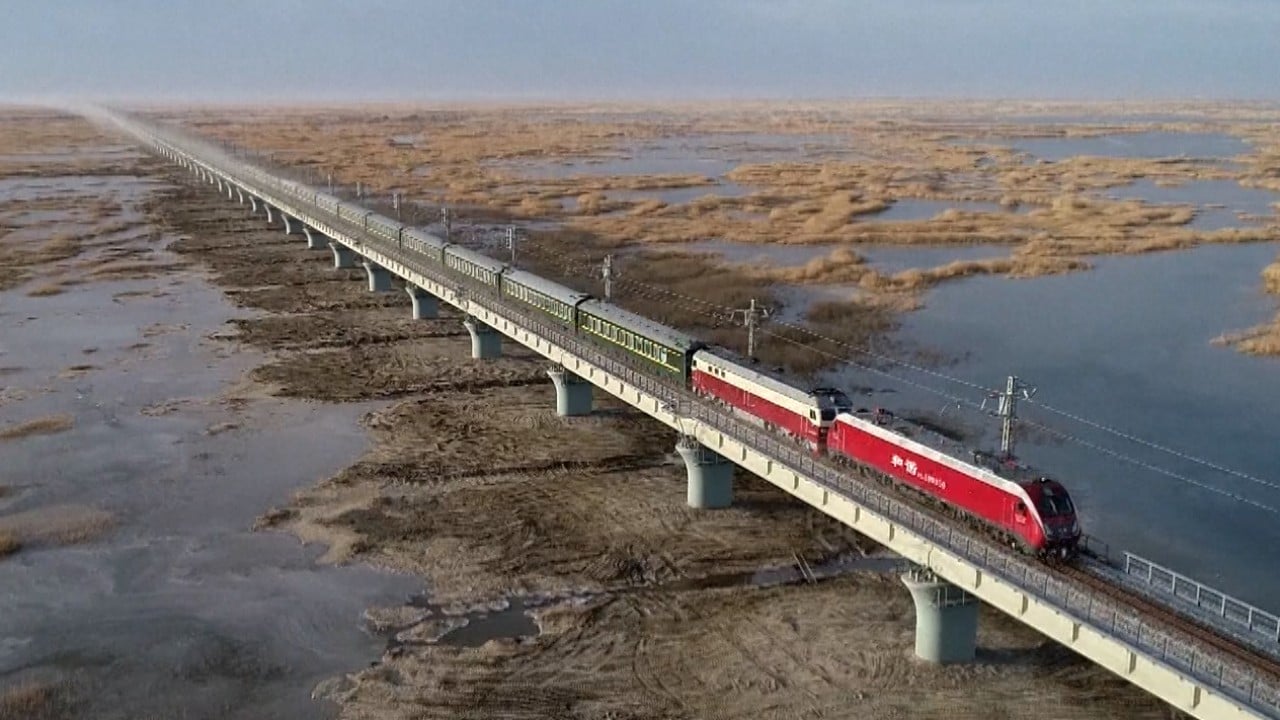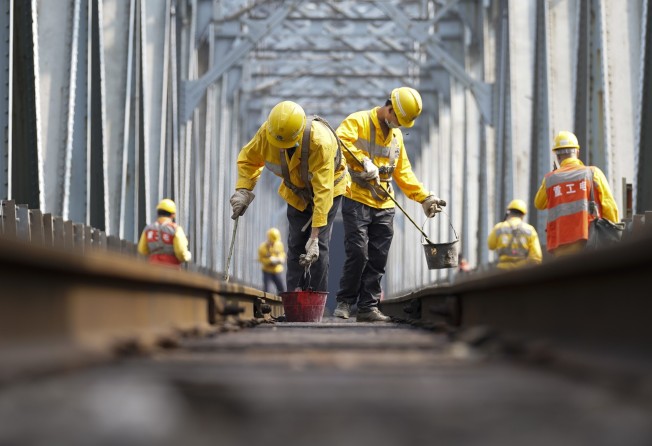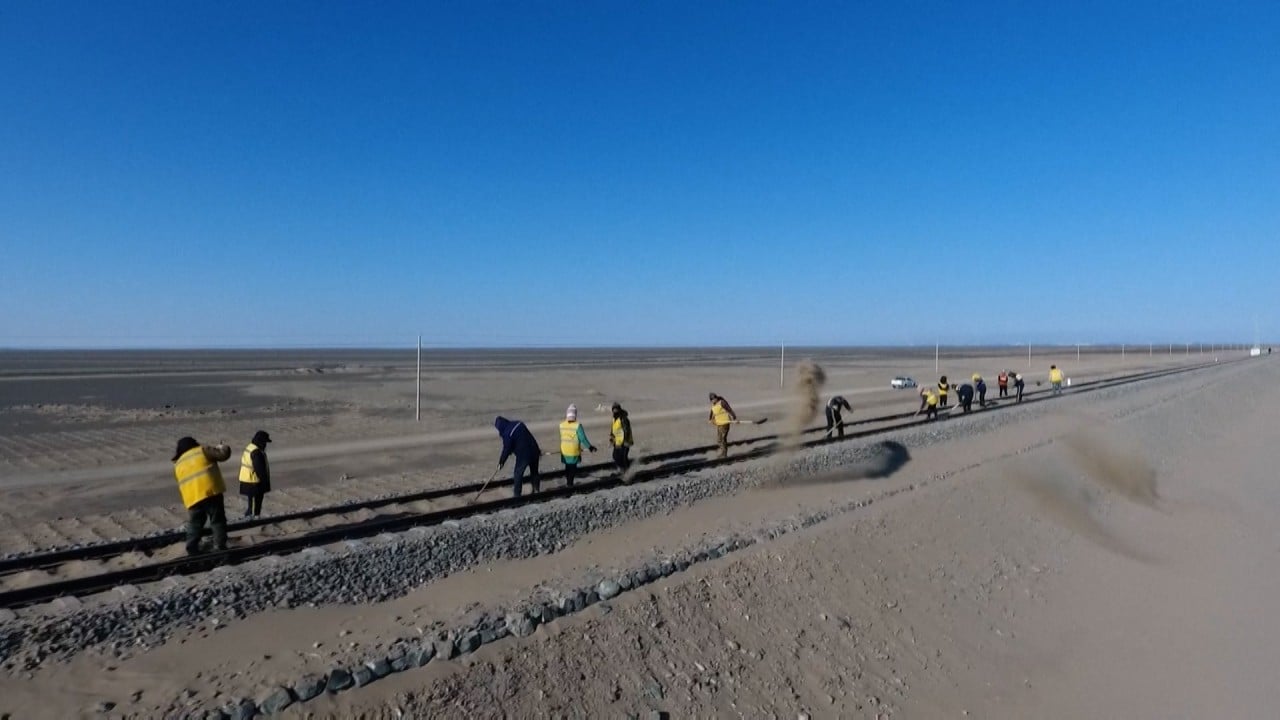
01:28
China builds over 4,000km of railway in 2020

China’s railway authority will prioritise restructuring its operations to enhance efficiency and revenue this year, rather than continuing to expand track mileage, in the latest example of Beijing moving away from debt-fuelled growth.
Annual railway investment, which often reflects government enthusiasm for infrastructure investment, dropped to 781.9 billion yuan (US$120.7 billion) last year, falling below 800 billion yuan for the first time since 2013, according to data released at the annual China State Railway Group conference last week.
No annual investment target has been disclosed for 2021, but the planned launch of 3,700km of rail lines this year compared with 4,933km last year, fewer new projects, and changing government spending priorities signal a further decline in the coming years.
Instead, the state railway company vowed last week to reform its transport schedule to maximise the benefits of its massive existing rail network and restructure its businesses to boost productivity.

01:28
China builds over 4,000km of railway in 2020
The company is targeting 1.177 trillion yuan of revenue this year, an increase from 1.13 trillion yuan last year, based on a 43.7 per cent rise in passenger traffic to 3.1 billion, and a 3.4 per cent increase in cargo deliveries to 3.7 billion tonnes.
Infrastructure construction played an important role in stabilising the economy after the coronavirus outbreak caused a record contraction of 6.8 per cent in the first quarter of last year. It helped lift gross domestic product (GDP) growth back to 4.9 per cent in the third quarter and potentially 2 per cent for 2020 as a whole.
Nevertheless, growth in China’s rail network mileage slowed to 2 per cent per cent in the first 11 months of last year, down from 3.8 per cent in 2019 and 19 per cent in 2017.
Overall railway track mileage has increased 20.9 per cent over the past five years to 146,300km, while the high-speed network doubled to 37,900km. The high-speed trunk line network now allows travel between Beijing and most provincial capitals within eight hours.
But the price of this expansion has been high: railway debt rose to 5.49 trillion yuan (US$847.6 billion) at the end of 2019, or 65 per cent of the value of the railway system’s assets.
Railway investment is expected to fall this year as the government focuses on boosting consumer spending, while budgeting more for people’s livelihoods and new infrastructure projects that fit strategic goals.
In an interview with state media last week, Finance Minister Liu Kun said the government would prioritise spending on employment, education, social welfare and public health, after an unprecedented rise in the fiscal deficit ratio to 3.6 per cent last year to combat the pandemic.
Government spending needs to be “more sustainable” and debt as a proportion of GDP should be kept “basically stable”, Liu said.

01:26
Chinese workers on mission to ensure safety of desert railway
Analysts estimate that China’s budget deficit ratio could fall to about 3 per cent this year, while the quota for the issuance of local government special purpose bonds, which mainly fund infrastructure projects, could drop to 3 trillion yuan from last year’s 3.75 trillion yuan.
“The policy focus would shift from supporting infrastructure projects to improving people’s livelihoods and reducing income imbalances,” Morgan Stanley said in a research note.
The augmented fiscal deficit – the broad measurement of government spending including the budgeted fiscal deficit, local bonds, and other expenditures – could narrow to 12 per cent of GDP in 2021 from a record high of 15.4 per cent last year, it said.
Efforts to reduce the level of national debt, which began rising again in 2020 after falling in previous years due to a government debt-reduction campaign, is expected to dominate Beijing’s agenda over the next five years.
Government enthusiasm for investment will continue in the first year of the new five-year plan for 2021-25, although most will be guided into key industrial projects.
Several provinces have already released investment plans. Hubei, which was hit the hardest by the pandemic last year, announced 427.4 billion yuan of new projects this year, including 130 billion yuan for new infrastructure, as well as 488.1 billion yuan for existing projects.
Shanghai, the country’s economic hub, will launch 64 projects with a total investment of 270 billion yuan, with a focus on supporting the integrated circuit, pharmaceutical and artificial intelligence sectors.
The northwestern province of Shaanxi has budgeted 2.19 trillion yuan for 542 key industrial projects over the next five years, including 429.5 billion yuan for this year.
“Traditional infrastructure construction is a short-term countercyclical measure to offset economic decline. But China can no longer walk the old road,” said Wang Jun, chief economist of Zhongyuan Bank.
“It’s more important to invigorate manufacturing investment by improving the business environment and lowering their burdens,” he added.